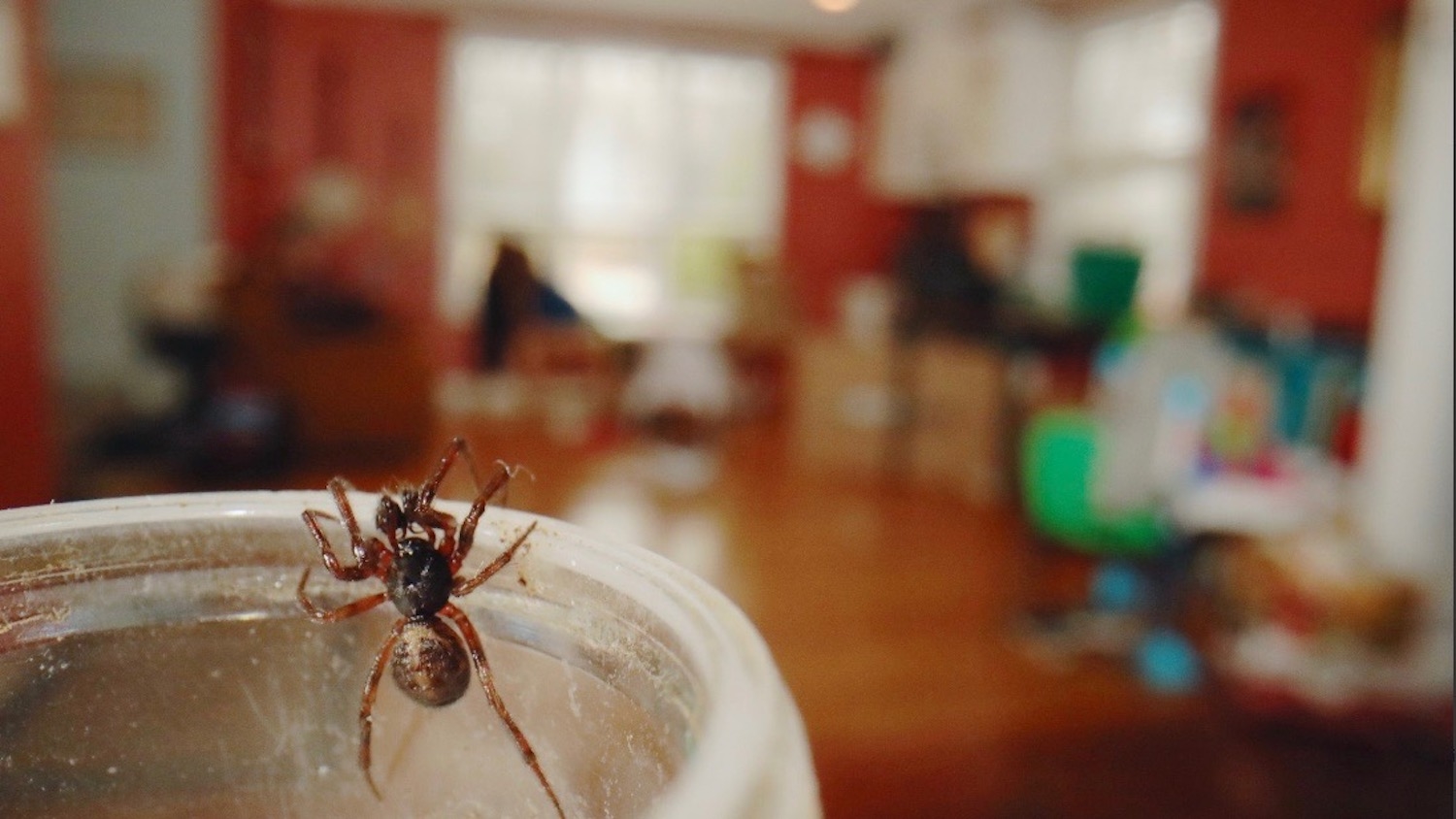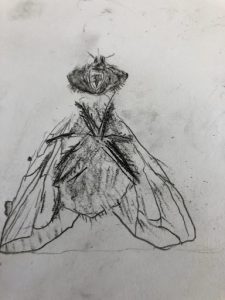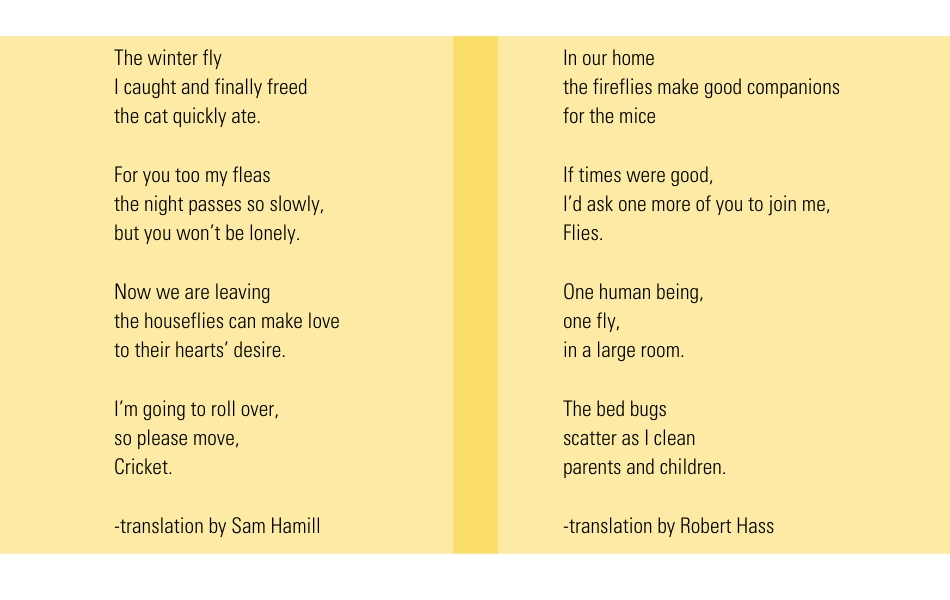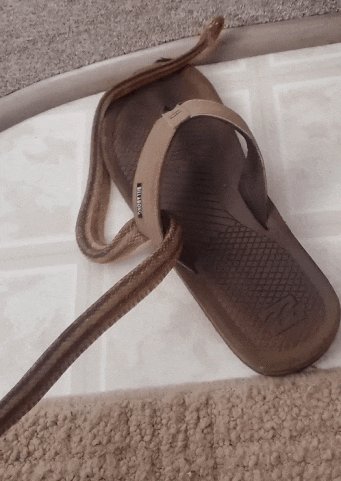10,000 Photos of the Wild Life in Homes (and Counting)

Note: This is a guest post by Prof. Rob Dunn, August Sanchez Dunn, and the Never Home Alone team.
Roughly a year and half ago, as chronicled by Nicola Twilley in the New York Times, we set out, with participants around the world, to begin cataloguing the animals living in homes. We did so via an iNaturalist project in which participants (including me), could (and can) submit photos of the life in their homes.
This public project, which continues and which we hope you will join, began on the back of work we had done in a smaller number of homes in Raleigh, North Carolina. When we first started that work, our colleagues thought it boring. They said as much when we gave talks. It went sort of like this.
Colleague: “I have a question…”
Me: “Yes, what is it?”
Colleague: “This is boring.”*
What could we possibly find? A lot. On windowsills and floors, in bathrooms and light fixtures, we uncovered a tremendous diversity of species. But then our colleagues said, “well, but are they really living there, predictably living there, or are they just blowing in?” (In other words, “still boring.”). One of our goals in working with iNaturalist to enlist the public to help us study the life in homes was to see to what extent the species we had found were really regular denizens rather than occasional interlopers. Well, thanks to more than 2000 participants, we can now tell you. Or, we can at least now begin to tell you.
*August pointed out that his teachers would have been quick to remind, in this instance, that this utterance was a statement not a question.

Our initial goal, as Nicola Twilley announced, was ten thousand observations of animal species in homes, a big goal. It is a goal that we have achieved, as of yesterday. Or rather, it is a goal that our participants achieved, as of yesterday. As we have looked at their results, we know some things for sure. First and foremost, the life in homes, around the world, is definitely not boring. Consider, for example, the giant crab spider (Heteropoda venatoria) found in some tropical Asian homes, a spider with a five inch arm-span. A toilet seat-sized spider is many things, none of them boring.

It has also become clear that many more species predictably dwell indoors than had been apparent based on the scientific literature. Dozens of these species appear to be indoors basically everywhere in the world. Of the twenty most common species detected by participants, nearly all are present in the Americas, Europe, Africa and Asia. For these species, including the long-bodied house spider, house centipede, greenhouse camel cricket, varied carpet beetle, bathroom moth midge, American cockroach, Indian meal moth, pantropical jumping spider, long-tailed silverfish, European earwig and many more, the home is a world and the world is a home. Many of these species have been in homes around the world for a while. The poet Issa, for example, in examining his own home in the late 1700s, commented on many species that seem likely to be the same ones being seen around the world today, or at least species of many of the same genera. In this way, his and our participants’ observations about these species are timeless (which makes it all the more surprising that so much about these common species has yet to be studied).
 At least the fleas, mice, and bed bugs were the same species that iNaturalist participants are still finding in their homes today. Some of the flies and crickets probably are too.
At least the fleas, mice, and bed bugs were the same species that iNaturalist participants are still finding in their homes today. Some of the flies and crickets probably are too.

But as we have looked more at the list, we’ve also seen quite a few species that, while common in some regions, are definitely not everywhere. This appears to be particularly true for ants and spiders. While there are at least a dozen spider species (maybe more, as we tabulate better) that are in homes from Australia to Anaheim (we just liked the alliteration; we may not have any records from Anaheim–haven’t checked), many spider species were more geographically restricted. Participants observed some 259 species of spiders indoors, most of them relatively restricted in their geography and most of them, also, very poorly studied. For example the boreal combfoot spider photographed by James Waters is found almost exclusively in North America (with a small introduced population in Europe). Issa had a lot to say about spiders, though we can’t be sure which spider species. Most famously he wrote…

My guess is that the spider in question was not a geographically restricted one, but instead the long-bodied cellar spider (Pholcus phalangiodes; the most frequently observed animal species in houses) but we don’t know. Regardless, we take this poem to mean Issa let the spiders in his home be, whether they were individuals of the very most common species or a species unique to Japan. If you are willing to keep house casually, at least with regard to cleaning away spiders, take pictures of them. Write poems about them. Draw them. Keep an eye on them. We are beginning to suspect that some of the spiders in houses live in their particular corners and crannies of the home for many years, perhaps as long as a decade. In writing about house spiders, Issa might have seen the same spiders, again and again, during his life. He could write not just about spiders in general, but instead about a spider, an individual, a fellow being around which he was a little less lonely. Indeed, this is just what the author David Sedaris (who was born and raised in Raleigh) did in 2008 upon discovering a large spider in his house in Normandy, France. He befriended it and then began to observe; those observations appear in an article in the New Yorker, in which he wrote…
I was at my desk one afternoon writing a letter when I heard a faint buzzing sound, like a tiny car switching into a higher gear. Curious, I went to the window, and there, in a web, I saw what looked like an angry raisin. It was a trapped fly, and as I bent forward to get a closer look a spider rushed forth, and carried it screaming to a little woven encampment situated between the wall and the window casing. It was like watching someone you hate getting mugged: three seconds of hardcore violence, and when it was over you just wanted it to happen again.
The spider Sedaris was watching (and would continue to watch, feed and watch some more) was a large individual of the species, Tegenaria duellica, the giant house spider. This species is common nowhere, based on the observations of our iNaturalist participants, but present in Europe and the Pacific Northwest of the United States. It is a giant jewel of a spider worthy of the emotions Sedaris would go on to describe when he wrote, “At that moment (…) I stood at the window with my mouth hanging open, all I recognized was a profound sense of wonder,” wonder at the life of the spider, wonder at the life that surrounds us wherever we might be. Regardless of which species you find in your own home, watch them like Sedaris watched his own private giant house spider, with patience, empathy and whatever special approach or perspective most suits you.*
* Sedaris also mentions his experience with the Carolina wolf spider when he was growing up in Raleigh, North Carolina. It, he writes,… “Those had been hunters rather than trappers. Big shaggy things the size of a baby’s hand, they roamed the basement of my parents’ house, and evoked from my sisters the prolonged, spine-tingling screams called for in movies when the mummy invades…” We had just one observation of the Carolina wolf spider (Hogna carolinensis) made by a participant in a home in Austin, Texas.
As for the ants, many of the ants that come into our homes live both indoors and out. They are more of a reflection of outdoor nature than are other species and, as a result, differ from house to house and region to region. They are a connection not to the ubiquitous features of our indoor life, but instead to the varied conditions of the world outdoors. Yet, we also suspect there are some general patterns to which ant species thrive in homes, patterns we need more observations in order to test. For example, it seems as though carpenter ants (which make their homes in wood, but don’t do much actual carpentry and don’t eat the wood in which they live) seem to be found walking through homes with unusual frequency (the black carpenter ant, Camponotus pennsylvanicus) is one of the most common species seen so far in houses in North America. On the other hand, some of the ants that succeed in houses appear to do so by being able to make many small, connected colonies, in essence turning your house into an apartment complex. Meanwhile, in the tropics, four people found trap jaw ants (Odontomachus species) in their homes, ants that rely on a hair trigger to release the pressure in their mandibles and allow them to snap shut on prey.

Yet, while ten thousand observations tells us a lot about common, widespread species, it doesn’t yet tell us as much about the rarer, more geographically restricted life forms. We have just four observations of Odontomachus ants in homes, for example. And just a dozen or so observations of the giant house spider. To understand those species, we need more photos. We need to know more about just how different the ant species and spider species in homes in different regions are. Yes, this means we now want more observations. We want 20,000 observations. And what better time to help study life indoors than now, when, amidst quarantines, so many of us find ourselves with time to examine our nooks and crannies, or rather, those of our homes. If you choose to join us in this mission, we hope that you, like David Sedaris, experience the sentiment we have experienced again and again as we have gone about our work, “How had I spent so much time in that house and never realized what was going on around me?”
In the coming months of our sequester, we will be documenting our own homes (it is the wilderness at hand). But we will also be working to make sense of what our participants (hopefully including you) have seen and are seeing. We will also begin to write a scientific paper based on participants observations, while collaborating with some of the participants to do so. In the meantime, we look forward to new observations in the way that a child looks forward to the contents of a present. And that is what the observations are, presents that, once we unwrap them, tell us much more about the world than we knew before, a world that is so close to us and yet at the sametime so easily overlooked, a world that even as our countries are now separated by border policies and divisions, unites. These observations unite us with each other in the same way that Issa’s poems unite us with the feelings of one man in ancient Japan. We may be very different and yet are all capable of patient observation and, I hope, also all able to see in other lives, something of our own. Of course, sometimes our observations also reveal the differences in how we live too, such as this poem by Issa which begs the question of what about his home was so different from my own home as to allow the proximity of horse and bed.

For the record, if you do have a horse in your bedroom, we ask that you not upload a photo of it to our iNaturalist project. Or rather, you should upload a photo of it only if it happens to be a wild horse (in which case, you probably have other more urgent things to tend to anyway, like getting the horse out of your bedroom). We decided, as a policy, to exclude domestic animals.
This post was originally published in Department of Applied Ecology.
- Categories:


